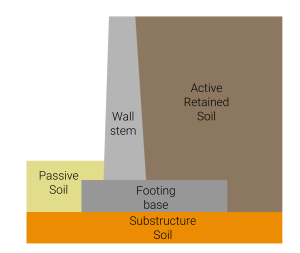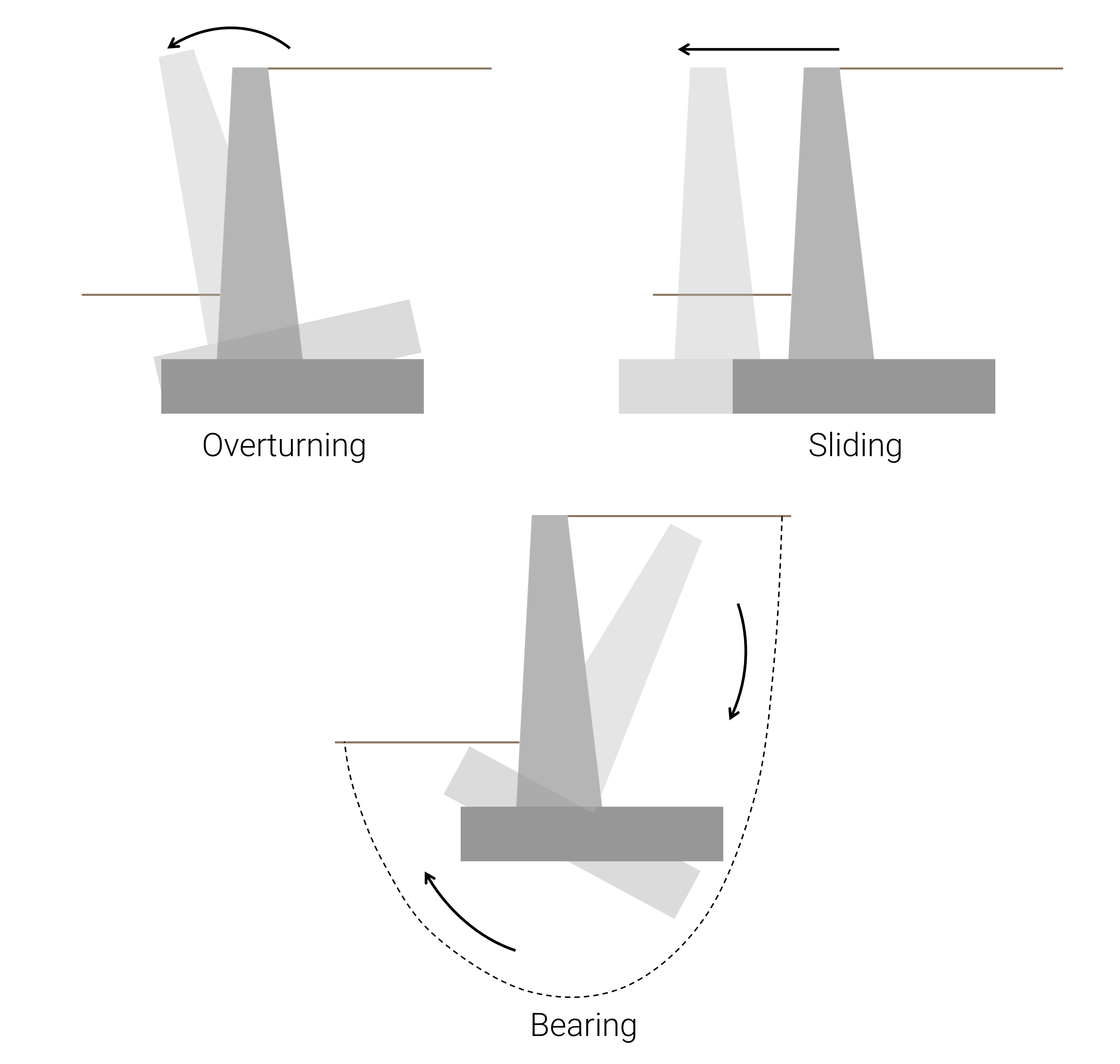Retaining Wall Footing Stability Checks
Retaining Wall or Wall Footings
Retaining wall or wall footings are vertical or close to vertical structures aimed to retain soil on one side, preventing the retained material from collapsing, slipping, and eroding. Wall footings provide support to the soil arranged in a way that its repose internal friction angle is exceeded, and therefore would collapse if not stabilized with a structure. Wall footings are normally used for creating usable flat land out of steep terrain to construct another structure such as a highway or a building. They can be considered as independent structures or as part of wider construction systems.
Retaining wall footing structures are basically composed of a concrete wall stem and a concrete footing base. There are three different soil zones that are considered in the stability analysis: Passive soil, Active soil, and Substructure soil. The passive soil helps the retaining wall footing and active soil self-weight to withstand the action of the retained soil pressure and the pressure associated with the external surcharge when applied. The substructure soil is in charge of bearing the wall footing system overall weight.
Stability Requirements
A wall footing may fail in any of the following ways, in terms of stability:
- It may overturn about its toe
- It may slide along its base
- It may fail due to the loss of bearing capacity of the soil supporting the base
Overturning check
For calculating the Factor of Safety against Overturning about the toe (the most bottom-left corner of the base), the sum of resisting moments is divided by the sum of overturning moments. Each of the components for the retaining wall footing overturning factor of safety calculation, is listed below:
- Resisting moments: From all the downwards forces located to the right and all the rightwards forces above the left-most corner of the base multiplied by its lever to the centroid of the load resultant.
- Stem wall weight
- Base footing weight
- Active soil weight
- Passive soil weight (if included)
- Surcharge load
- The vertical component of the active soil pressure (if the backfill is inclined)
- The vertical component of the surcharge resultant pressure (if the backfill is inclined)
- Passive soil pressure (if included)
- Overturning Moments: From all the leftwards forces above the left-most corner of the base multiplied by its lever to the centroid of the load resultant.
- The horizontal component of the active soil pressure
- The horizontal component of the surcharge resultant pressure
A calculation example of the overturning moment can be found here, and the overturning check can be performed using the Free SkyCiv Wall Footing Calculator
Sliding check
For calculating the Factor of Safety against sliding, the sum of the horizontal resisting loads (pointing to the right) is divided by the sum of the loads pointing to the left.
- Resisting loads:
- Horizontal force due to friction between the footing base and the substructure soil
- Passive soil pressure (if included)
- Sliding loads:
- The horizontal component of the active soil pressure
- The horizontal component of the surcharge resultant pressure
A calculation example of the sliding can be found here, and the sliding check can be performed using the Free SkyCiv Wall Footing Calculator
Bearing capacity check
For calculating the Factor of Safety against bearing capacity failure, the maximum allowable pressure of the substructure soil is divided by the maximum pressure exerted by the total vertical load accounting for the trapezoidal distribution of the subsoil reaction on the retaining wall footing base.
SkyCiv Wall Footing Calculator
Using the SkyCiv Retaining Wall Calculator you can easily perform stability checks both for cantilever and gravity walls, with the possibility to use tapered stem or parapet, use an inclined backfill, and include or neglect passive soil pressure contribution.
Product Developer
BEng (Civil)




